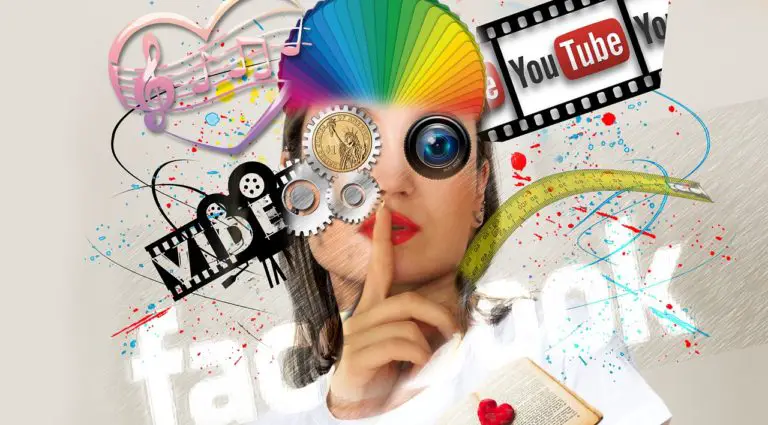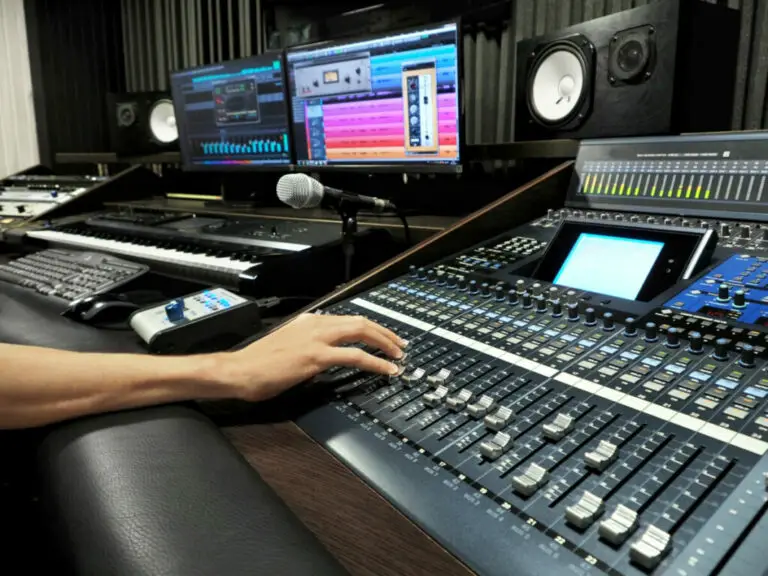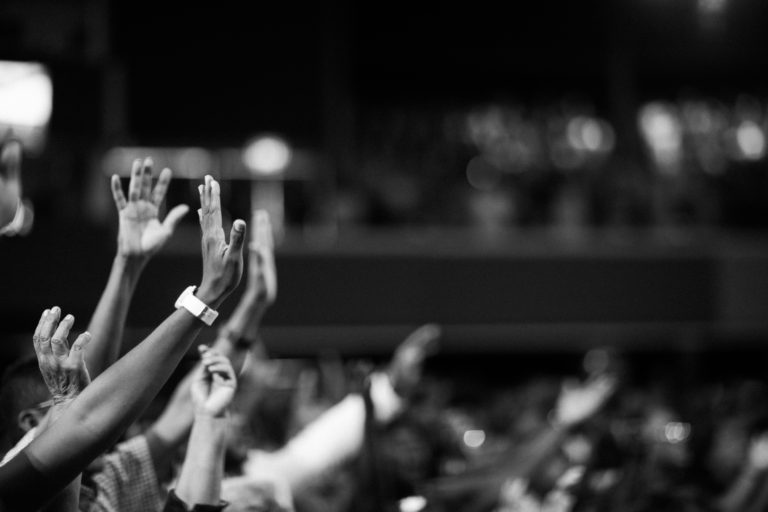The Complete Guide to Marketing and Online Advertising for Musicians
Marketing and online advertising are essential tools for any musician looking to grow their fan base and promote their music. While the internet has changed the paradigm of what’s possible with music marketing, it’s also opened the floodgates to increased competition and lessened attention.
This complete guide is geared to help musicians understand the fundamentals of digital marketing and online advertising. Whether you’re in the early stages of your music career or a seasoned touring artist, this guide will help you leverage industry-leading tools and strategies to promote your music more effectively and gain new fans.
The Basics of Online Advertising For Musicians
What Is a Marketing Funnel?
A marketing funnel is a visual representation of the customer journey, from the initial awareness of a product or service (in this case, a band, tour, or album), to the final conversion or purchase. The funnel is typically divided into several stages, including:
- Awareness: This is when potential customers first become aware of your product or service.
- Interest: At this stage, potential customers are interested in your product or service and start gathering more information about it.
- Consideration: At this stage, potential customers compare your product or service to others and decide whether or not to move forward.
- Conversion: At this stage, potential customers take the desired action, such as making a purchase or signing up for a free trial.
- Loyalty: At this stage, customers become loyal to your brand and may become repeat customers.
The marketing funnel helps to understand the customer journey and optimizes the conversion rate at each stage. Marketing expert Alex Cattoni breaks it down further in this helpful video guide:
What Is a Buyer Persona?
A buyer persona represents a specific type of customer (or, in this case, fan) based on market research and real-life data about your existing fans. It is a detailed profile that includes demographic information, pain points, goals, values, and behaviors of your ideal fans.
For musicians, by creating a buyer persona, a band can better understand their target audience and tailor their marketing and sales efforts to better meet their fans’ needs and interests.
A buyer persona usually includes information such as:
- Demographics (age, gender, income, education, etc.)
- Psychographics (values, interests, lifestyle, etc.)
- Goals and challenges
- Buying behavior and decision-making process (which tours do they go to, which types of music do they buy? (i.e., streaming vs. CDs vs. vinyl)
- Preferred channels of communication and content consumption
Creating buyer personas helps bands to better segment their target audience, develop more effective marketing strategies, and improve the overall fan experience. It enables a band to focus on a specific group of people rather than trying to appeal to everyone. By understanding your ideal fan, you can create content, products, and campaigns that resonate with them and increase the chances of conversions.
Why Should Musicians Know the Basics of Marketing?
Like any business that doesn’t have a built-in demand, marketing is essential for promotion and expansion. Musicians who want to grow their careers must have a baseline knowledge of marketing to help stand out and capture the attention of potential fans. By giving yourself an edge with marketing knowledge, you can beat out the thousands of other artists vying for the same fan attention.
Marketing not only helps with early promotion and can help maintain an existing fan base and keep them in the loop on any news and updates as a band’s career naturally progresses and changes over time.
Different Types of Paid Advertising For Musicians
PPC Advertising on Google or other search engines (Paid Search)
Paid search advertising involves paying to have your website or music video appear at the top of search engine results for specific keywords, usually above the organically ranked websites and articles for each query.
Paid search can be highly effective for bands, especially when trying to advertise tours, as it allows for zip-code level targeting, and one of the most common ways people find tickets for tours is through search engines.
Google and Bing are the primary market leaders for paid search ads and offer various targeting and ad placement options to help deliver the best results for reaching new fans.
Google’s ad platform also handles YouTube ads, which can be a great way to get your music videos more exposure. They offer multiple placement styles, including:
Pre-Roll Targeting
Pre-roll targeting allows you to get your music videos in front of specific URLs that your fans might also be watching. A great example is other music videos of larger artists in your genre. This way, you know that you’re getting your content right in front of fans that fit your ideal persona.
Pre-roll targeting can be skippable or non-skippable, depending on other targeting parameters and what premiums you’re looking to spend.
Channel Targeting
Channel targeting is an offshoot of pre-roll targeting that can allow you to target videos in front of an entire channel. This can be useful for bands if they want their videos in front of specific music publication channels or record labels with a roster of similar artists.
YouTube Search Results
You can also use specific keywords, topics, and interests to get your music videos displayed on YouTube search results. These can be a bit more expensive than pre-roll ads, but they can help hone in on user intent.
For these ads, you’re often billed only when users click on your ads in the search results. This qualifies them and makes them more likely to watch the entire ad without skipping away.
In my experience, this placement has been less effective at driving vanity metrics like views and likes but is highly effective and moving the needle on foundational metrics like subscribers.
Paid Social Advertising
Paid social advertising involves paying to promote your content on social media platforms like Facebook, Instagram, TikTok, Snapchat, and Twitter.
This type of advertising can be an extremely effective way to reach a highly targeted audience. You can select specific demographics, interests, and behaviors to help hone in on your ideal fan persona.
Different objectives within paid social can help diversify how you want to promote your band. The most common and relevant Paid Social objectives for musicians include:
Awareness
Awareness campaigns are often billed on a CPM model, where you are trying to get your event, music, tour, or general news in front of as many fans as possible. These are often the most affordable types of campaigns, as you only get charged for the impressions that your ads are served.
Engagement
Engagement campaigns can be great for bands looking to stir conversation about a big piece of news or pivotal content drop like a new music video. These campaigns often bill per engagement (like, comment, share, etc.) and can be a great way to help boost your organic social numbers, as engagement is often shown organically in most people’s news feeds. If someone sees their friend liked or commented on a post, they’re likely to check it out, offering exponential exposure beyond what you’re paying for.
Traffic
Traffic campaigns are similar to your standard PPC campaigns like you’d find on Google Search ads. You’re paying per click to send someone to your landing page. They’re a bit more expensive than awareness and engagement ads, but they can help bring people into that ‘consideration’ stage of a marketing funnel.
For musicians, traffic campaigns can effectively drive clicks to a new website, music video, a pre-order link for new music, direct to streaming services, or a general catch-all landing page such as a LinkTree.
Conversions
Conversion campaigns are the most expensive ad unit available on paid social, and most platforms will require tracking to prove effective. Once you have a tracking pixel on your site and integrated with the Paid Social platforms of your choice, you’ll be able to target and retarget people based on direct actions that they take on your website, not just actions they take on social media apps.
This can be a potent tool, as you can retarget people who have added to your cart but have not purchased yet on your merch store or try to ensure that fans close the loop when buying tickets on your or a promoter partner’s website.
Followers
Follower campaigns aren’t available on all social media channels but can be an excellent way to drum up some engagement and bring more people to your profile. This type of campaign isn’t always worth the money, but it can be good if you’ve been inactive as a group for a while and have a new announcement coming soon that you want more people to see.
Lead Generation
Bands don’t commonly use lead generation, but it can be a potent tool to bring fans from your social audience over to an email list, where you have full ownership of the vertical and can reach them directly.
When running lead generation ads, bands often use ‘lead magnets,’ which can be content like never before heard demos, sneak peeks of new music, or exclusive access to merchandise in exchange for joining an email list.
Video Views
Lastly, video view campaigns can be a great way to maximize the reach of new music videos. Top video-focused social channels like Facebook/Instagram and TikTok leverage video view campaigns. While they may detract views from YouTube, they can still help get your content in front of a wider audience and reach fans where they may not have found you otherwise.
Display advertising:
This type of advertising involves placing banner ads on websites that are visited by your target audience. This can be a great way to reach new fans and increase brand awareness. Platforms like Google AdSense, BuySellAds, and Taboola are popular for display advertising.
Bands can leverage display ads by buying ad space on blogs and popular music sites and directing traffic to their website or merch store.
Old-fashioned advertising
This type of advertising involves placing ads on traditional media such as radio, newspapers, and billboards. This type of advertising is often more expensive, less measurable, and less impactful than digital advertising. Still, it can be an excellent supplement to an ad campaign and help boost word of mouth.
Free Advertising Options For Musicians
Sending your music to blogs, playlists, etc
Sending your music to blogs or playlists can be a great way to get exposure to new audiences and increase brand awareness. While it is free, it’s often the case that you’ll have more success by working with a publicist on this route.
Creating a social media presence:
Creating a social media presence can take time, but an organic social strategy is essential to building a fan base online, especially as a new band. Platforms like Facebook/Instagram, Twitter, and TikTok are great places to start when forming a band’s online presence.
Share your music on social platforms like YouTube or TikTok:
Sharing your music on social media like YouTube or TikTok doesn’t require paid advertising. These platforms are great discovery tools for music, and by just having your content on them, you’re helping lay the foundation for fans to organically discover and interact with your music in ways that can be even more powerful than ads in many cases.
Collaborate with larger bands to get exposure
Collaborating with other bands is one of the oldest and most tried and true methods of gaining exposure and building a fanbase. Whether it’s putting out a split EP together or just making video content with each other, collaborations can help introduce fans of each band to the other and help drive synergy between two artists.
Go to local shows and talk with the fans and the bands
For any band still starting, getting involved in your local music scene is a free and easy way to start growing a local following. Talking with other local bands and fans in your area is a great way to naturally get your name out there and start building a local network to support you early in your career.
It’s important to note that free advertising options may take more time and effort to see results, but they can be a great way to build a fanbase and increase brand awareness without spending much money.
Best Marketing Tools For Bands
While these tools aren’t necessary, they can be beneficial for bands trying to carve out the right marketing strategy that works for them and their ideal fan base.
Spotify For Artists
Spotify For Artists is a free tool that allows musicians to upload their music to Spotify, view listener statistics, and pitch their music to Spotify’s editorial playlists. This platform provides valuable data such as the number of listeners, where they are located, and which songs are more popular. This data can be further used to establish your fan persona and determine what targeting methods will be best for online advertising.
ToneDen
ToneDen is a social media marketing tool that allows musicians to automate their social media presence and schedule posts in advance. It also provides analytics and targeting options to optimize campaigns and reach an ideal audience. ToneDen also offers integrations with advertising platforms like Facebook and can provide analytics to help improve ad performance.
Instagram Shop
Instagram Shop is an e-commerce feature of Instagram that allows musicians to tag products in their posts and stories, making it easier for fans to purchase their music and merchandise directly from Instagram.
Canva
Canva is a graphic design tool that allows musicians to create visually appealing designs for social media posts, album covers, tour ads, and other promotional materials. It is user-friendly, free, and offers a wide variety of templates to help you create professional designs.
Email Management
Email management tools like MailChimp, GetResponse, and Aweber allow musicians to create and send newsletters and promotional emails to their fanbase. This is a great way to keep fans updated with new music, upcoming shows, and other relevant information.
Final Thoughts
When it comes to marketing for bands, there’s no one-size-fits-all approach. However, having an edge in understanding marketing from all paid and organic channels will help give musicians an edge when competing for eyes and ears as the internet continues to broaden the music discovery landscape.








